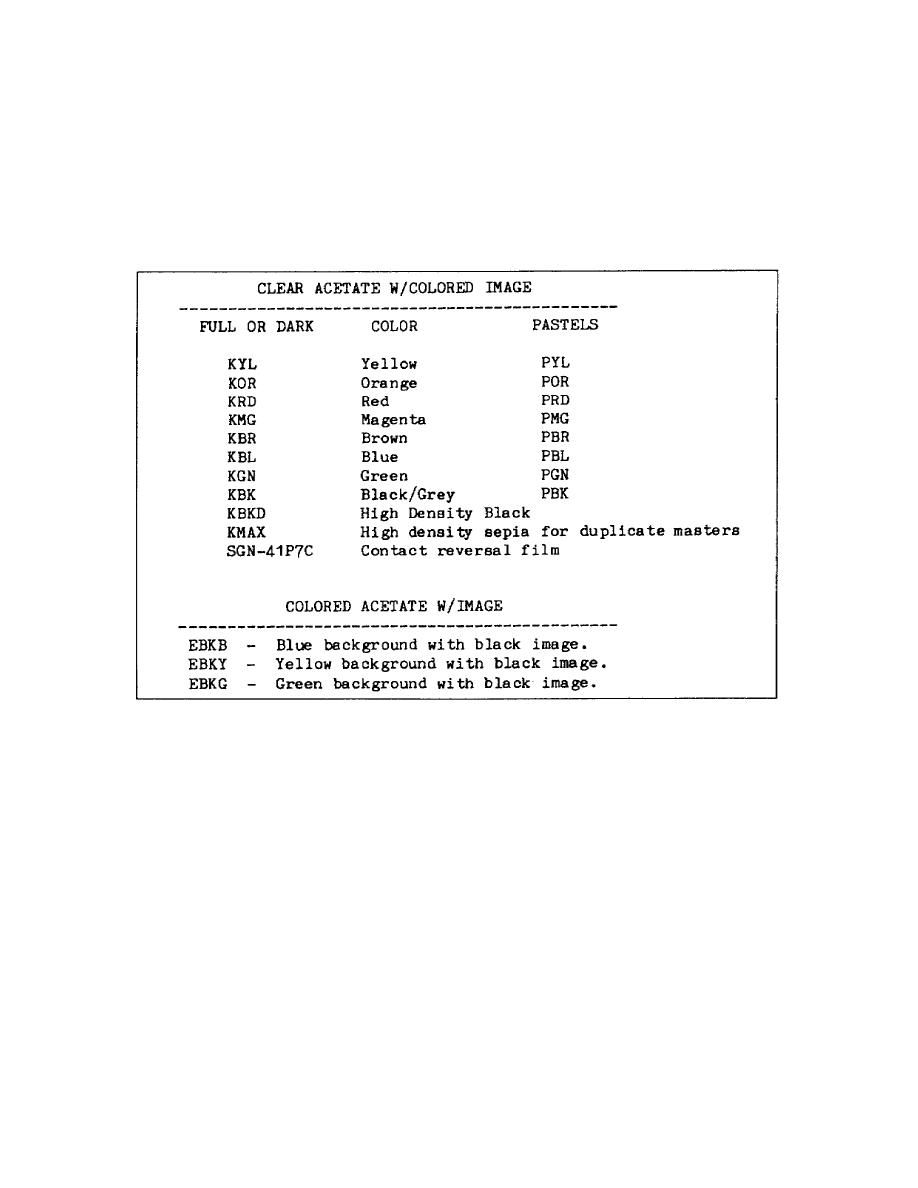
(2) To reduce the number of sheets, you may superimpose one color on top of another, thus
producing a third color. For example: blue on yellow produces green; red on yellow produces orange;
red on blue produces violet, etc. It is a good rule to keep these combining colors light. This keeps them
from becoming too dark for projection on the screen.
(3) When you make multicolor viewgraphs, you make a black (KBK) copy first. On your
second sheet, ink in the image to appear on the first color foil. Continue this process for each color
required. Diazo materials come in many colors. Figure 2-4 lists some common acetate materials.
Figure 2-4. Acetate diazo materials
d. Light-blocking Techniques. When preparing your master, you may decide to block, or mask,
certain areas of your master sheet. There are several techniques for blocking or masking.
(1) Used card-weight diazo paper is a good, inexpensive material for masking a large area of
color when the area is not complicated in shape. To make an opaque mask, print a copy of the master
on diazo-weight stock. Then cut out the image area using a knife or scissors. Next, mount the mask in
its position on a sheet of mylar. The masked area prints as a color on the diazo film.
2-8
SS0529


 Previous Page
Previous Page
